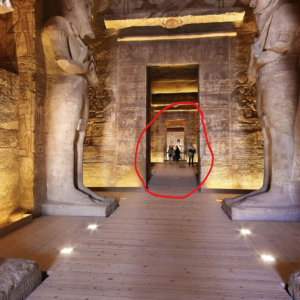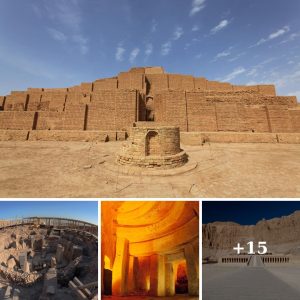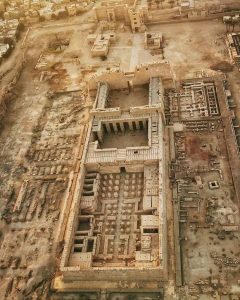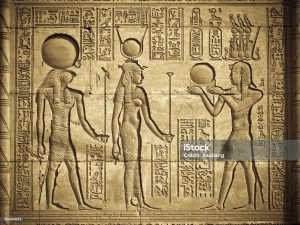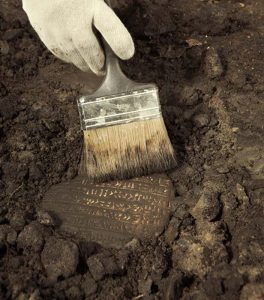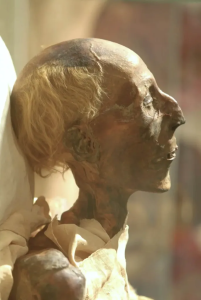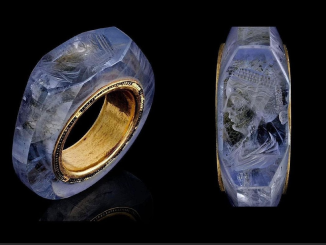The hypostyle hall of the Temple of Ramesses II at Abu Simbel is 18 m (59 ft) long and 16.7 m (55 ft) wide and is supported by eight massive pillars depicting the deified Ramesses linked to the god Osiris. The temple’s interior is decorated with engravings showing Ramesses and Nefertari paying homage to the gods and bas-reliefs depicting the Battle of Kadesh in which the Egyptian king fought against the Hittites.
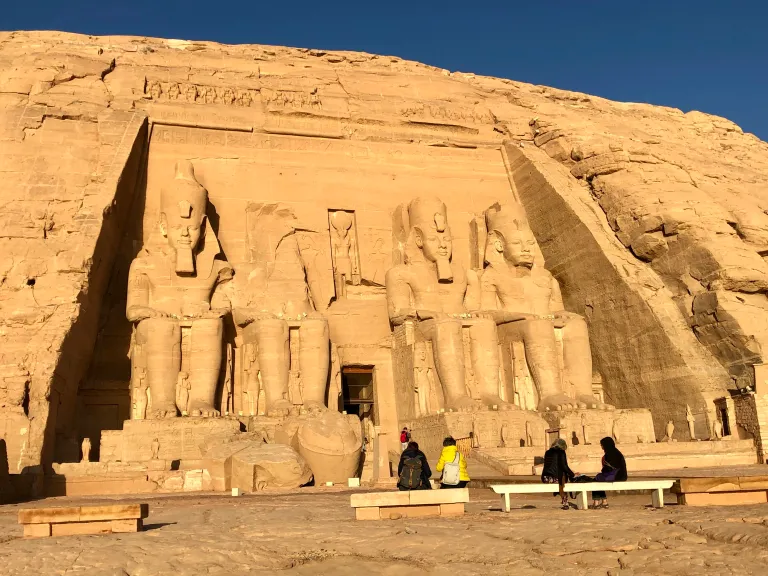
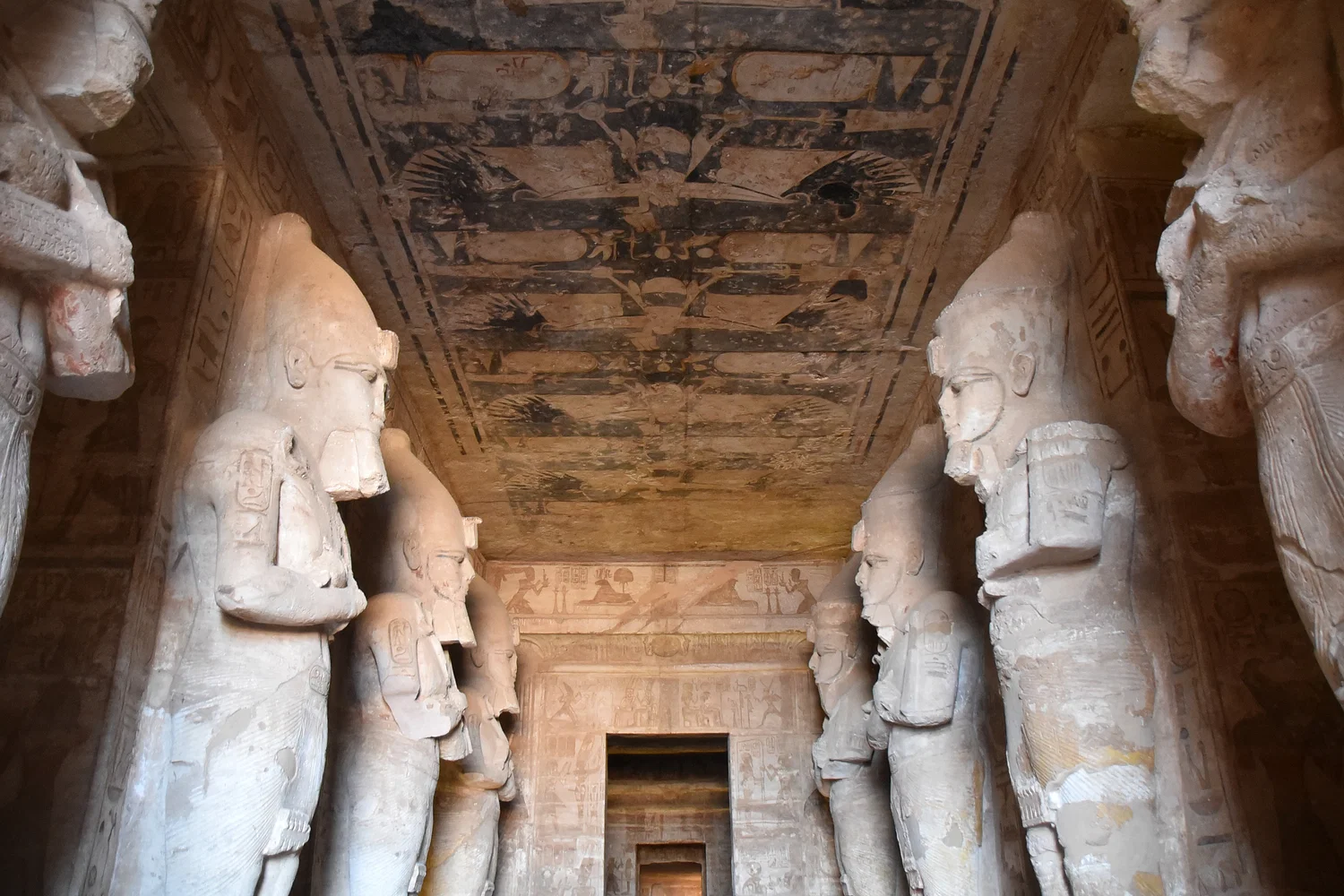
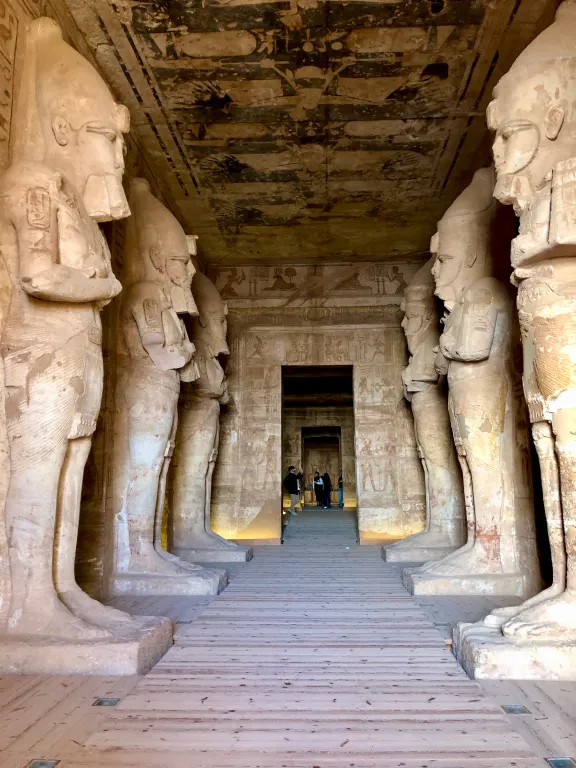
Abu Simbel, site of two temples built by the Egyptian king Ramses II (reigned 1279-13 BCE), now located in Aswān muhafazah (governorate), southern Egypt. The four colossal statues of Ramses in front of the main temple are spectacular examples of ancient Egyptian art. By means of a complex engineering feat in the 1960s, the temples were salvaged from the rising waters of the Nile River caused by erection of the “Aswan High Dam”. Carved out of a sandstone cliff on the west bank of the Nile, south of Korosko (modern Kuruskū), the temples were unknown to the outside world until their rediscovery in 1813 by the Swiss researcher Johann Ludwig Burckhard. They were first explored in 1817 by the early Egyptologist Giovanni Battista Belzoni. Carved around their feet are small figures representing Ramses’ children, his queen, Nefertari, and his mother, Muttuy (Mut-tuy, or Queen.
